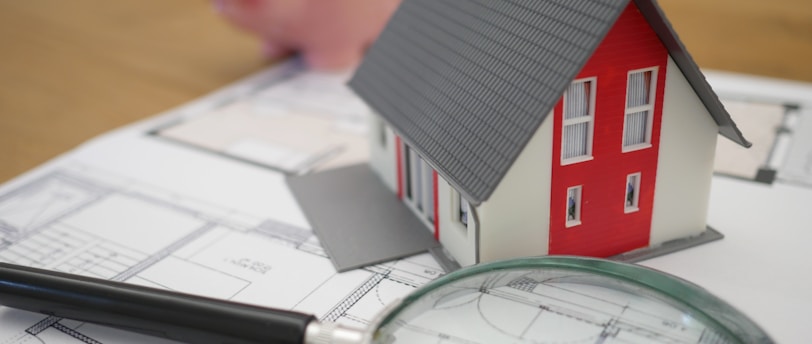Build an Emergency Fund: 10 Essential Steps for Financial Security
Update
1/3/2025


How Can I Build My Emergency Fund?
You will thank yourself for learning about how to build your emergency fund as this can save you from a lot of stress. From medical emergencies to other unexpected expenses, an emergency fund can provide a comfortable cushion as you continue on your day without worrying much about these expenses. Your emergency fund can help you not to get derailed or distracted with sudden expenses.
1. Understand the Importance of an Emergency Fund
An emergency fund is a savings account specifically designated for unexpected expenses. Unlike other savings goals, such as a vacation or a down payment on a house, an emergency fund is there to cover life’s surprises. Without this financial buffer, you might find yourself relying on credit cards or loans, which can lead to debt and financial stress. A solid emergency fund ensures you’re prepared for whatever comes your way.
2. Determine How Much You Need
A common rule of thumb is to save three to six months’ worth of living expenses in your emergency fund. However, the exact amount you need can vary depending on your lifestyle, job stability, and family size. Start by calculating your monthly expenses, including rent or mortgage, utilities, groceries, insurance, and any other necessary costs. Multiply this amount by the number of months you want to cover, and you'll have your emergency fund goal.
3. Set a Realistic Savings Goal
Once you've determined how much you need, set a realistic savings goal. If the total amount feels overwhelming, break it down into smaller, more manageable milestones. For example, aim to save $500, then $1,000, and gradually work your way up. Setting smaller goals can help keep you motivated and make the process less daunting.
4. Create a Budget to Prioritize Savings
Building an emergency fund requires disciplined saving. Start by creating a budget that prioritizes saving a portion of your income each month. Look for areas where you can cut back on spending—like dining out, subscriptions, or non-essential shopping—and redirect those funds into your emergency savings. Automating your savings by setting up a direct transfer from your checking account to your savings account can make it easier to stay on track.
5. Open a Separate Savings Account
To avoid the temptation of dipping into your emergency fund, consider opening a separate savings account dedicated solely to this purpose. A high-yield savings account is an excellent option, as it offers better interest rates than a regular savings account, helping your money grow over time. Keeping your emergency fund separate from your other accounts will ensure you’re not tempted to spend it on non-emergencies.
6. Start Small and Build Over Time
If you're starting from scratch, it’s okay to start small. Even setting aside $20 or $50 a week can add up over time. The key is consistency—regular contributions, no matter how small, will gradually build your emergency fund. Remember, the goal is progress, not perfection.
7. Consider Automating Your Savings
One of the easiest ways to build your emergency fund is to automate your savings. Set up an automatic transfer from your checking account to your savings account every payday. This "set it and forget it" approach ensures that you consistently save money without having to think about it. Automating your savings also helps you resist the urge to skip contributions when other expenses arise.
8. Use Windfalls Wisely
Unexpected income, such as tax refunds, bonuses, or monetary gifts, can give your emergency fund a significant boost. Instead of spending this extra cash, consider depositing it directly into your emergency fund. Using windfalls to grow your savings can help you reach your goal faster and provide additional financial security.
9. Avoid Dipping into Your Emergency Fund
It's important to resist the temptation to use your emergency fund for non-emergencies. Define what constitutes an emergency—such as job loss, major medical expenses, or urgent home repairs—and stick to these guidelines. For other expenses, try to rely on your regular budget or savings. Preserving your emergency fund for true emergencies will ensure it's there when you need it most.
10. Reassess and Adjust as Needed
Your financial situation and needs may change over time, so it’s important to periodically reassess your emergency fund. If your monthly expenses increase, or if you’ve used some of your fund for an emergency, adjust your savings goals accordingly. Regularly reviewing and replenishing your emergency fund will keep it at the level you need to feel secure.
Building an emergency fund is a critical step toward financial stability and peace of mind. By determining how much you need, setting realistic goals, and consistently saving, you can create a financial cushion that will protect you in times of need. Remember, the key to building a successful emergency fund is consistency, discipline, and the willingness to prioritize your financial security.

Read More
FAQs

Guest Creative Team: Certified Health and Wellness Guide
Top 15 Foods For Clear and Smooth Skin
Best Lighting Options For Your Aquarium
When done well, the right lighting will not just benefit your enjoyment, but the overall health and longevity of your fish. [Read more]
Home Organization: Decluttering and Storage
Sometimes it's not about the mess, it's about organization. Items not stored properly will start to look like a mess, and with time, it just won't look good. [Read more]
Get Featured
Be our online feature of the month, a guest contributor, or promote your business
Some links on our website are affiliate links. This means we may receive a commission to support our production if you click through and make a purchase from one of our partners. This comes at no additional cost to you.
FREE SUBSCRIPTION!
Get FREE monthly newsletter, discounts, and freebies!
Montecilla MMR / 21ebizmedia@gmail.com
Montecilla MMR / 21ebizmedia@gmail.com


Vibrant Living
WEEKLY
Vol 01 Issue 05
Editor's Pick Special Issue
The Best Beach Destinations for 2024
TOP TEN SMART Kitchen Gadgets
Top Ten Beauty Hacks
TOP GARDEN MAKEOVER FAVORITES
MORE INSIDE!
Copyright 2024. Vibrant Living Weekly Magazine. Privacy Policy. Terms and Condition.
